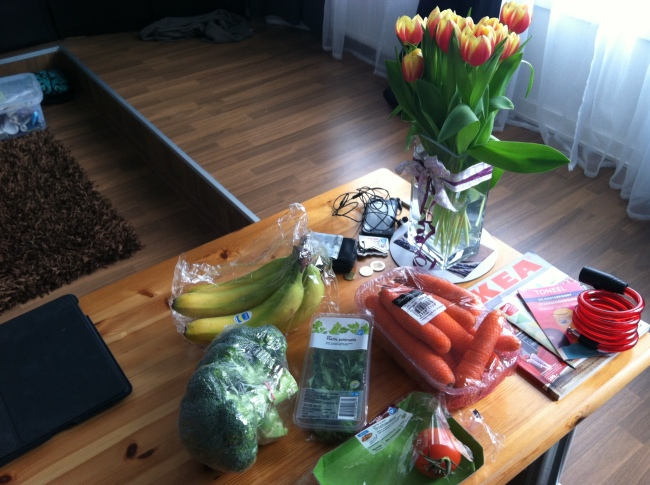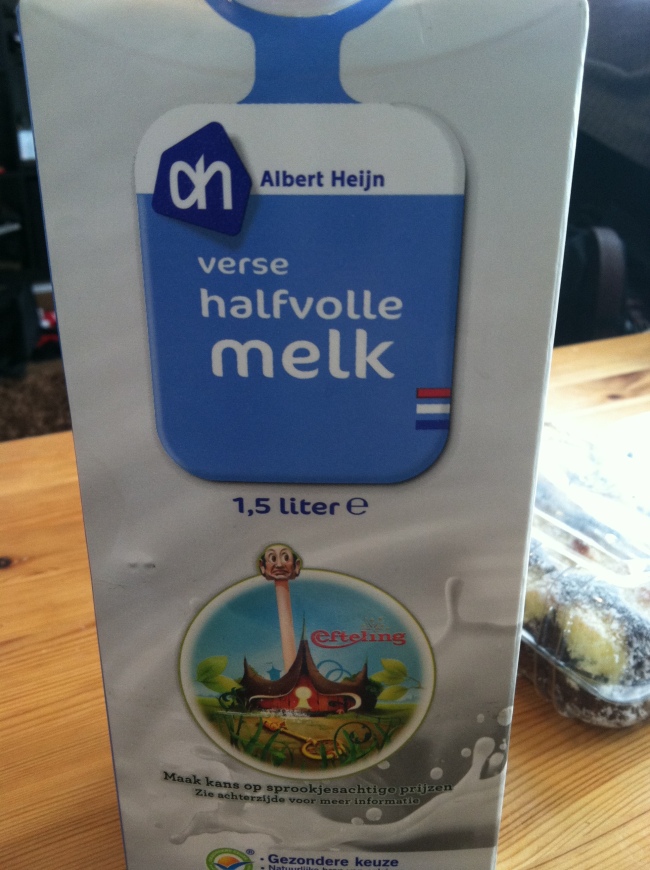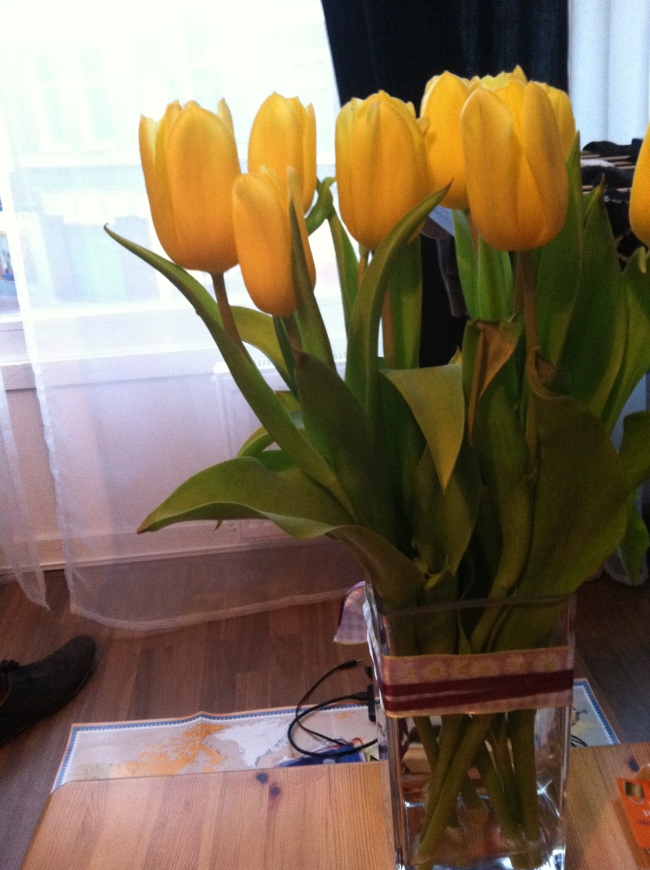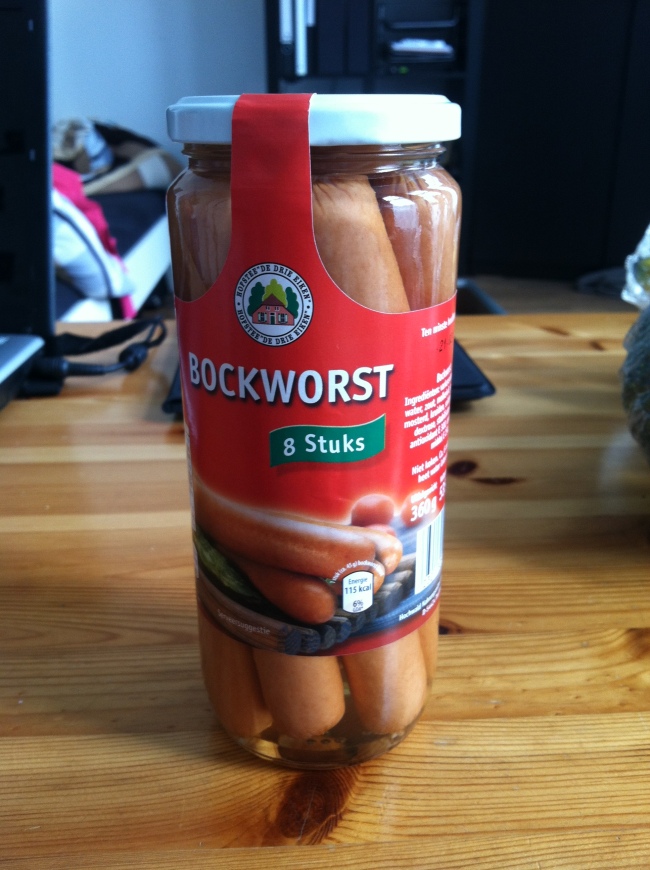Something as mundane as shopping for food can be a fascinating museum of cultural anthropology when in a grocery store abroad. I hope I’m not the only one that loves walking around just staring at all the different types of packaging, sections and foods available. You can learn a crazy amount about a culture by simply viewing how it’s food looks on shelves!
Shopping in the Netherlands
A large difference from stores in the U.S. popped out at me right away, in the form of waist-high gate door flaps after entering the store through the main doors. Don’t let these misdirect you from the entrance – push right on through to enter. The metal posts are a bit intimidating when I entered the first time, as I was already confused about the lotion of the entrance. I could just imagine people running after me or alarms going off because I went in the wrong door (or flap). That tends to happen when I’m abroad though, I imagine people are extra-interested in what I’m doing – since I have no idea what I’m doing! In reality, people don’t care (until you do something really crazy).
The main differences from American to Dutch grocery stores
1) Complementary coffee! First you have to figure out how the machine works though, and for that I believe you will need a local. Also, make sure it doesn’t have a price next to the buttons for the different types of drinks, because every now and then it’s not. Tricky!
2) Extra packaged veggies and fruit – a lot of plastic:
3) Crazy fun labels:
4) General advice about everything: Try it – you’ll like it! When in doubt, just try it. You will either find your favorite thing on the planet, or know exactly what to avoid for the next trip. Trial and error baby!
5) Fresh flowers – Of course I heard the Netherlands was the land of tulips, but they really are everywhere! It is so cheerful, I have taken to buying a a tulip bunch every week for 2 or 3 Euros, simply because it warms up our apartment so much. There are great street flower vendors everywhere as well:
6) Wieners in a glass bottle! (Cheating – this was from the German grocery store, but located in the Netherlands)
7) They sit, we stand. The women (90% of the time it’s a woman) behind the check out lanes sit in chairs as they check you out at lightning speed (I attribute the lightning speed to all those packaged fruits and veggies – no typing in codes!) Not sure whether sitting or standing is better in the log run – there are arguments that sitting is the smoking of our generation, but I admit I have to look into the statistics behind that as a yoga teacher, but, I digress…
8) BYOB – In pretty much every country I’ve shopped for food in, they’ve required a small payment for plastic bags (not much paper available that I’ve seen). This small fee gets everyone to re-pack old plastic bags into their purses and backpacks like crazy. I love being able to do this! Before it became a thing to bring your own cloth bags to the grocery store in the States, I felt like such a weirdo bringing my own bags. Win for the environment!
Tips and tricks when in a foreign grocery store
-Match the main words on the label to the main words on the shelf price tag
This works when you have no idea how to read the language and need to figure out what the price is. It works for Asian languages as well in my experience, just match up the order of the characters instead of the letters.
-Be prepared with your home-credit card and cash
Some stores don’t take VISA or the other major forms of payment AT ALL. Weird I know, but they only accept cash or bank cards from in-country. Good to check before hand, or bring two forms of payment at first.
-Look out for card-only or cash only lanes
Be prepared if you only have one form of payment on you to go in the correct lane. Some check-out lanes don’t have the capability to take one or the other type of payment, which can lead to an embarrassing interaction. They usually always have pictures above each lane if that’s the case – little coins and bills for cash and rectangles for credit cards.
-BYOB: Bring your own bags
As I outlined above, most other counties have adopted the pay-per-plastic-bag policy, a small fee, but enough to make it OK to hoard bags in your purse or backpack.
-They usually ask if you want your receipt at the end – learn how to say yes or no
Or just smile and say ‘sorry’ and they will either switch to English or print it out automatically.
-UNLESS: Watch if they staple the receipt to your bag or staple your bag closed
they might check your bag at the door with your receipt
-Learn how to say thank you – Always a nice touch at the end, especially if you’ve had to stumble through the transaction, or spoken English with them the whole time.
-Watch if you need to pack your own bag, or if a local does it for you – Usually, you don’t need to tip the baggers, but just watch those that are around you or go in front of you for the social queue. That is the most difficult thing to get used to in my opinion, not tipping for common things like taxi rides or a beer. Refer to country guides for the social norm.
-Some stores have guards at the entrances that put stickers on water or soda bottles when you enter the store
If you have any poking out of your purse or bag, they place the store name on it to show you didn’t steal. Kind of nice!
-Many countries have isle-specific helpers that work in each area
Usually to answer questions on the products or help you find things in the cosmetics and personal care isles; don’t be surprised if they come up to you and ask you some things in the local language. Just smile and say ‘sorry’ if you don’t know what they’re saying. Usually, they will just smile and walk away, or switch to English.
-Don’t be fooled by the price – always know the conversion roughly – I still get excited by the price on things in Europe – I’m used to the exchange rate being in-favor of the county rate. NOT IN EUROPE OR THE UK!
-Some stores offer complementary coffee- Watch to see how people take it, if they pay, or if there is a price listed next to the drink buttons (since sometimes it’s not complementary!).
-Matching the code on the product to the code on the price – Like I stated above, it is the BEST way to figure out the price on the product if you can’t match up the product name. It’s a handy tool I’ve used even in the US, since sometimes the products are switched around on the shelf, and you can’t quite tell the price, especially if it’s on sale. That long numeric code under the scanner image will match up to the product’s number under the scan – just use the last four numbers as they can be quite long. I’ll add a picture here ASAP.
So no matter if you are at a resort town with tons of amenities that feel like your home country’s or you are thousands of miles away in a small city located in a different country, check out the local grocery store or market. You will learn a ton about the local culture and customs, as well as find a new favorite food (or a great story to tell about some not-so-great-food). Cheers!
Do you have a crazy grocery store story from abroad?








Leave a Reply